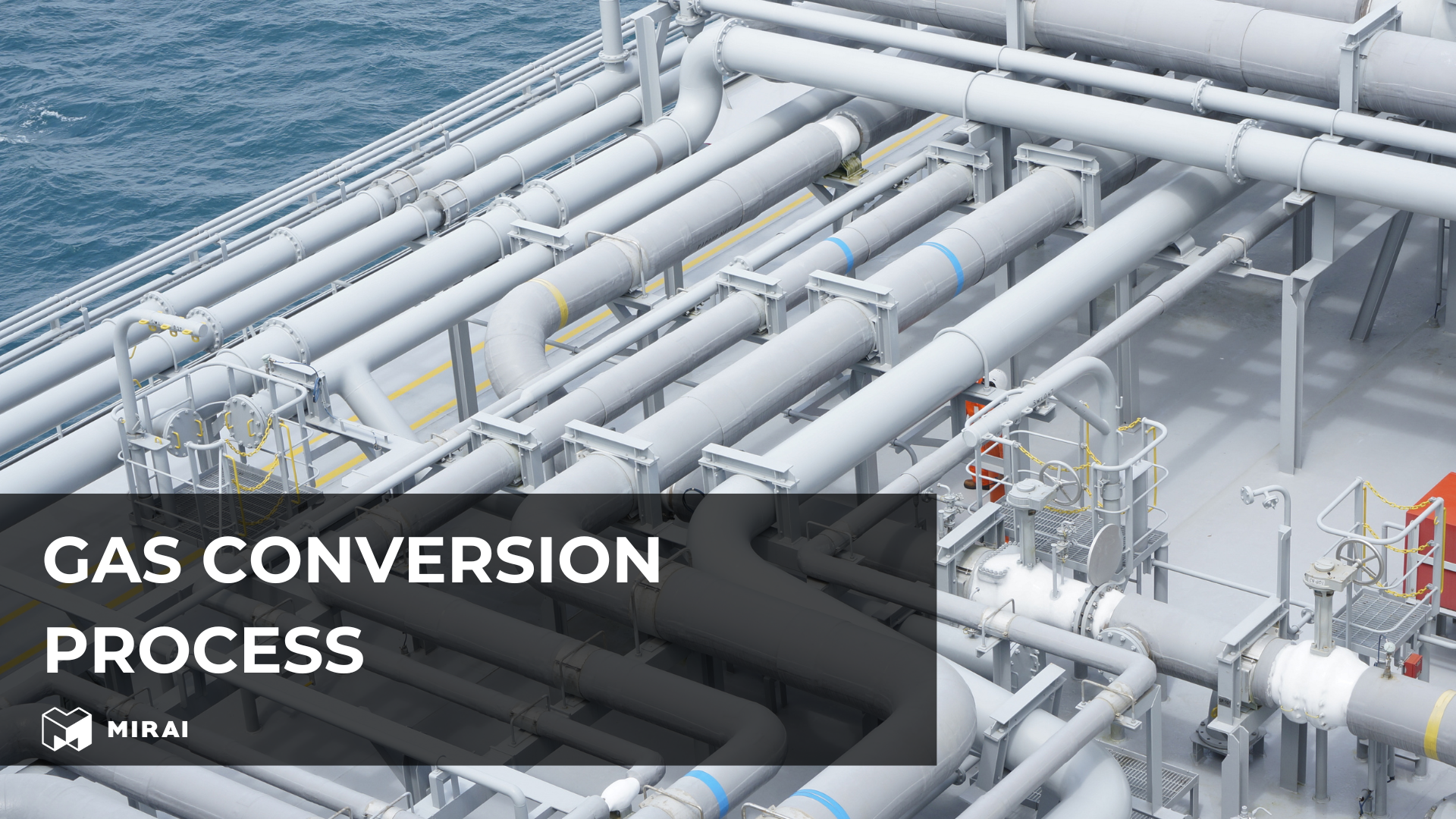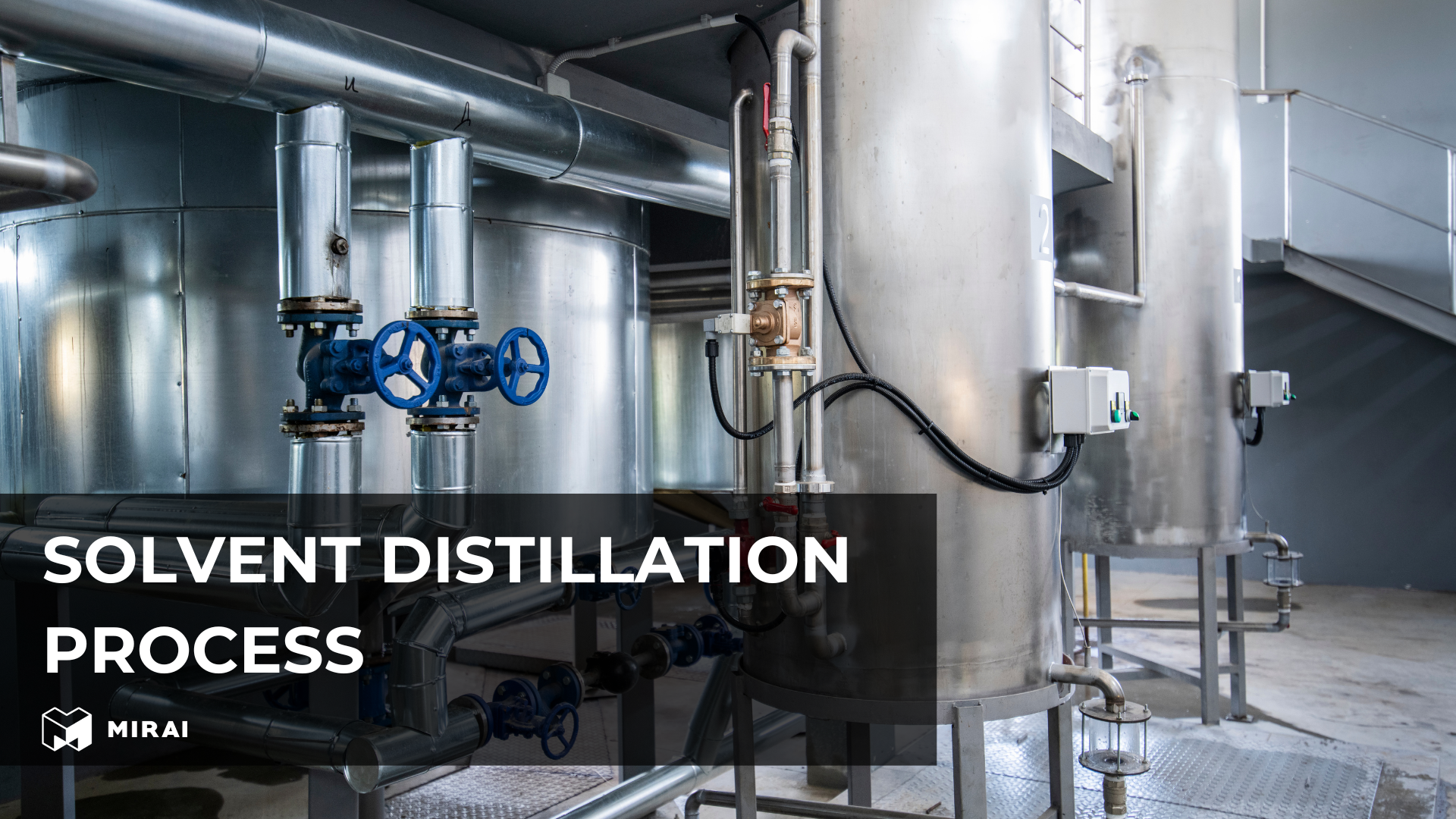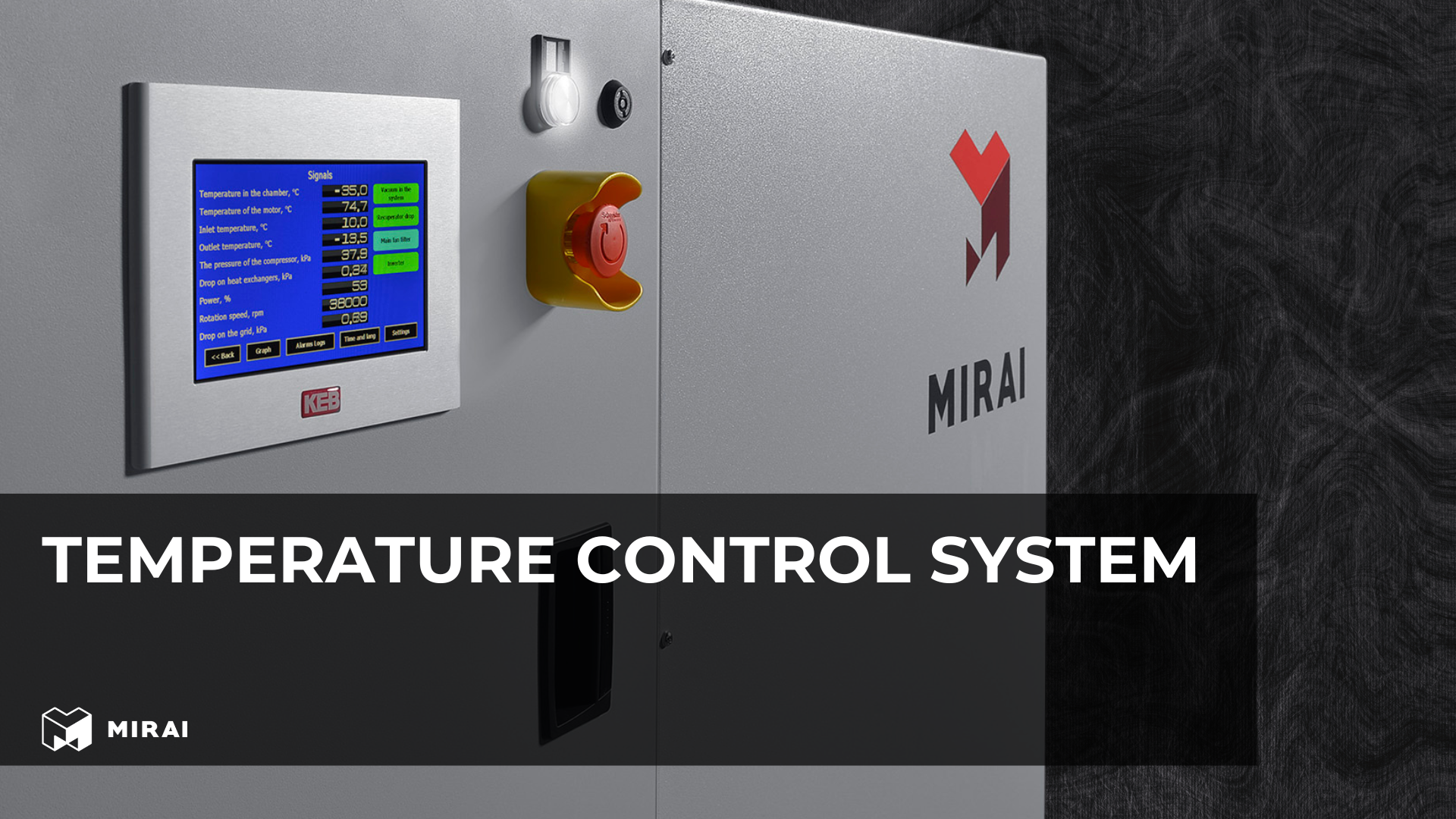Gas conversion process

Gas conversion is a critical process in the energy sector, involving the transformation of various gas forms into usable energy sources. This process encompasses several methods and technologies designed to optimize efficiency, safety, and environmental benefits. This article delves into the definition of gas conversion, the various methods used, the equipment involved, innovative technologies by Mirai Intex, application areas, and future development prospects. Additionally, the importance of cold in this sector will be highlighted.
Process Definition
Gas conversion refers to the process of transforming one form of gas into another or converting gas into liquid or solid forms for various applications. This can involve natural gas, propane (LP), and other hydrocarbons. The aim is to make these gasses suitable for use in residential, commercial, or industrial settings.
For instance, converting to gas from other energy sources like oil can lead to significant cost savings and environmental benefits. The cost to convert from oil to natural gas and the cost of converting oil heat to gas are important considerations for homeowners and businesses alike.
Gas Conversion Methods
Natural Gas Reforming
Natural gas reforming is a method where natural gas is converted into hydrogen and other gases. This process typically involves steam methane reforming (SMR), partial oxidation (POX), and autothermal reforming (ATR).
Gas-to-Liquid (GTL)
The GTL process converts natural gas into liquid fuels such as diesel and gasoline. This involves the Fischer-Tropsch synthesis, where natural gas is converted into synthetic crude oil before being refined into liquid fuels.
Liquefied Natural Gas (LNG)
LNG involves cooling natural gas to a very low temperature to convert it into a liquid state. This process makes it easier to store and transport natural gas over long distances.
Methanation
Methanation involves converting carbon monoxide and hydrogen into methane and water. This method is used to produce synthetic natural gas (SNG).
Propane (LP) Conversion
Propane can be converted into various forms for different uses, including as a fuel for heating and cooking. The conversion process involves ensuring the propane meets safety standards for its intended application.
Equipment Used in the Processes
Reformers
Reformers are used in the natural gas reforming process to convert methane into hydrogen and carbon dioxide. These are critical in hydrogen production plants.
Reactors
In the GTL process, reactors play a vital role in converting natural gas into liquid hydrocarbons through the Fischer-Tropsch synthesis.
Cryogenic Equipment
Cryogenic equipment is essential for the LNG process, where natural gas is cooled to extremely low temperatures to convert it into a liquid form.
Compressors
Compressors are used to increase the pressure of gasses during various conversion processes, ensuring efficient transportation and storage.
Heat Exchangers
Heat exchangers are crucial in transferring heat between different media, which is a common requirement in many gas conversion processes.
Mirai Intex in Gas Conversion
Mirai Intex has been at the forefront of developing innovative technologies that enhance the efficiency and safety of gas conversion processes. LNG refrigeration machines from Mirai Intex were made for LNG production, high-efficiency reformers for hydrogen production, and cutting-edge reactors for GTL processes. The MIRAI LNG series represents advanced refrigeration machines meticulously crafted for the liquefaction of biomethane. Derived from the proven success of our standard MIRAI Cold series, the LNG series has been specially modified to meet the demands of the liquefaction process.
Equipped with a range of safety features, high-temperature protection, sensor failure protection, and gas leakage protection, MIRAI's machines not only comply with international standards but also ensure a secure and efficient operation.
Moreover, we at Mirai provide a Monitoring System for all our refrigeration solutions. For the customers, who want to enhance safety and increase the longevity of their projects, this solution is the perfect choice.
Driven by an inverter for optimal part-load performance, the MIRAI Cold LNG line utilizes nitrogen as a natural and environmentally friendly refrigerant. With a direct connection to the client's condensate heat exchanger, it stands as a universal solution for diverse biogas liquefaction productions.
Residential
In residential areas, gas conversion is used to convert oil heating systems to natural gas. This involves installing natural gas lines, appliances, and ensuring compliance with safety codes and regulations. Homeowners in NJ, for example, often consider the cost of converting oil heat to gas, which includes installation, permits, and inspection.
Commercial
Commercial buildings use gas conversion for heating, cooking, and powering various appliances. The conversion process must adhere to safety codes, and regular maintenance is necessary to detect and repair leaks, ensuring safe operation.
Industrial
Industries rely on gas conversion for large-scale energy needs. Processes like LNG and GTL are crucial for industries that require high energy output. The equipment used in these processes must be robust and capable of handling extreme conditions.
Transportation
Gas conversion is also applied in the transportation sector, where LNG and GTL fuels are used as cleaner alternatives to traditional fuels. This sector benefits significantly from the environmental benefits and cost savings associated with gas conversion.
Development Prospects
The future of gas conversion looks promising, with several trends and advancements on the horizon:
Enhanced Efficiency
Research and development are focused on enhancing the efficiency of gas conversion processes. This includes improving the performance of reformers, reactors, and cryogenic systems to reduce energy consumption and increase yield.
Environmental Benefits
Gas conversion processes are being optimized to reduce greenhouse gas emissions. The development of cleaner technologies and the adoption of renewable energy sources in gas conversion are key trends.
Cost Reduction
Efforts are being made to reduce the cost of converting oil heat to gas and other conversion processes. This includes developing cost-effective equipment and streamlining installation procedures.
Safety Improvements
Safety remains a top priority in gas conversion processes. Innovations in leak detection, maintenance protocols, and compliance with safety codes and regulations are essential for safe operations.
Technological Innovations
Technological advancements, such as the use of artificial intelligence and machine learning, are being integrated into gas conversion processes. These technologies can optimize operations, predict maintenance needs, and enhance safety measures.
Rebates and Financing
Governments and energy companies, such as PSEG in NJ, offer rebates and financing options to encourage the adoption of gas conversion technologies. These incentives make it more affordable for homeowners and businesses to switch to natural gas.
Importance of Cold in Gas Conversion
The role of cold temperatures is particularly crucial in the LNG process. Cooling natural gas to convert it into a liquid form allows for easier and more efficient storage and transportation. Cryogenic equipment designed to handle such low temperatures ensures the integrity and efficiency of the LNG process. Without the ability to achieve and maintain these cold temperatures, the LNG process would not be feasible, highlighting the importance of cold in the gas conversion sector.
Conclusion
Gas conversion is a vital process that transforms various gas forms into usable energy sources. With methods like natural gas reforming, GTL, and LNG, along with the equipment and innovative technologies from companies like Mirai Intex, the sector continues to advance. Applications range from residential to industrial uses, offering cost savings, environmental benefits, and improved efficiency. As technology progresses, the future of gas conversion looks bright, with enhanced efficiency, reduced costs, and increased safety at the forefront of development efforts.

